
Now that we’re transitioning from full-time schooling toward our summer schedule (relaxed, fewer planned lessons), I consider our school year to be “finished” so I thought I’d provide an update on the curriculum we actually used and how it worked for us, any modifications we made, and whether we’ll use it again next year. I’ll also list what some of my tentative thoughts are on for choices for next year (as a reminder, C is 7 and D is 5 – second grade and kindergarten for the upcoming school year).
Here is the original post I wrote on what we were choosing: 2018-2019 Curriculum Choices
And here’s an update to it mid-year: So how did that “yearly plan” work out?
I’d highly recommend reading at least the first post if you haven’t so you can see what the choices actually were.
Overall Curriculum Planning
Last year for the first time, I attempted to plan each subject by topic (and loosely by week) for some subjects (mostly math, language and science) where we didn’t have curriculum to guide as along. It worked REALLY well. It cut down so much on the weekly planning because I knew which lessons to review and wasn’t trying to select our next topic, particularly in math where there are lots of different strands.
History
Plan: Do Great Lessons in weeks 1-10 and then transition to History Odyssey 1 (Ancients) curriculum.
Actual: We finished the Great Lessons in weeks 1-9 (that series of posts is here: Great Lessons) and did move on to History Odyssey.
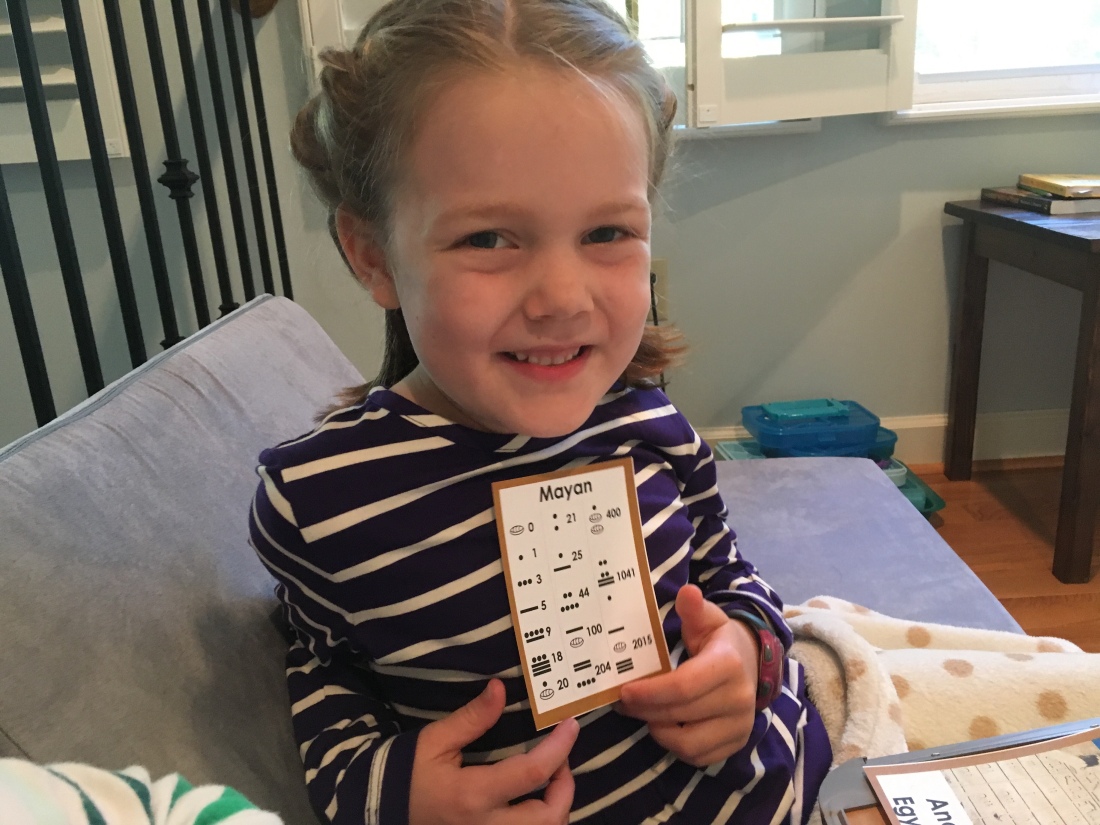
But I have to say that teaching all the Great Lessons from scratch (I had taught GL1 once before) nearly exhausted me. It was SO much. By GL4 and 5, I felt pretty burnt out. So I would highly recommend spreading them out more or preparing more in advance. Now that I’ve got most of my materials handy except for follow-ups and I feel confident that I could deliver them again but the first year was hard. Please don’t feel discouraged though, it was very much worth it and hopefully some of the resources I compiled will help others!

We also loved History Odyssey. It’s 35 weeks but because we started 10 weeks later, we’re just now finishing up with the Romans in our “summer school”. I also skipped 2-3 lessons on Native Americans that I plan to start with next year because I didn’t want to skim them but knew we wouldn’t have time. I felt like the curriculum was the right level of depth for a 1st grader and that the projects were fun and informative. We were also able to combine a lot of art work with the History Odyssey units which was wonderful because that’s not my strong suit AT ALL.
Next year: We will definitely be using History Odyssey again (Middle Ages). I will modify slightly for my Kindergartner to be able to do it alongside us but I’m very happy with the curriculum. I’m still on the fence about teaching the Great Lessons. I’m thinking I may do it every 2 years (so skipping next year) just because it does take a lot of time and in a “class” with only a few children, I’m not sure it’s necessary every year.
Art
Plan: Align with history
Actual: We did align with history and I will continue to do that, where possible, next year. This is not my strong suit by quite a bit so I know it’s something that I need to put some more thought into before next year.
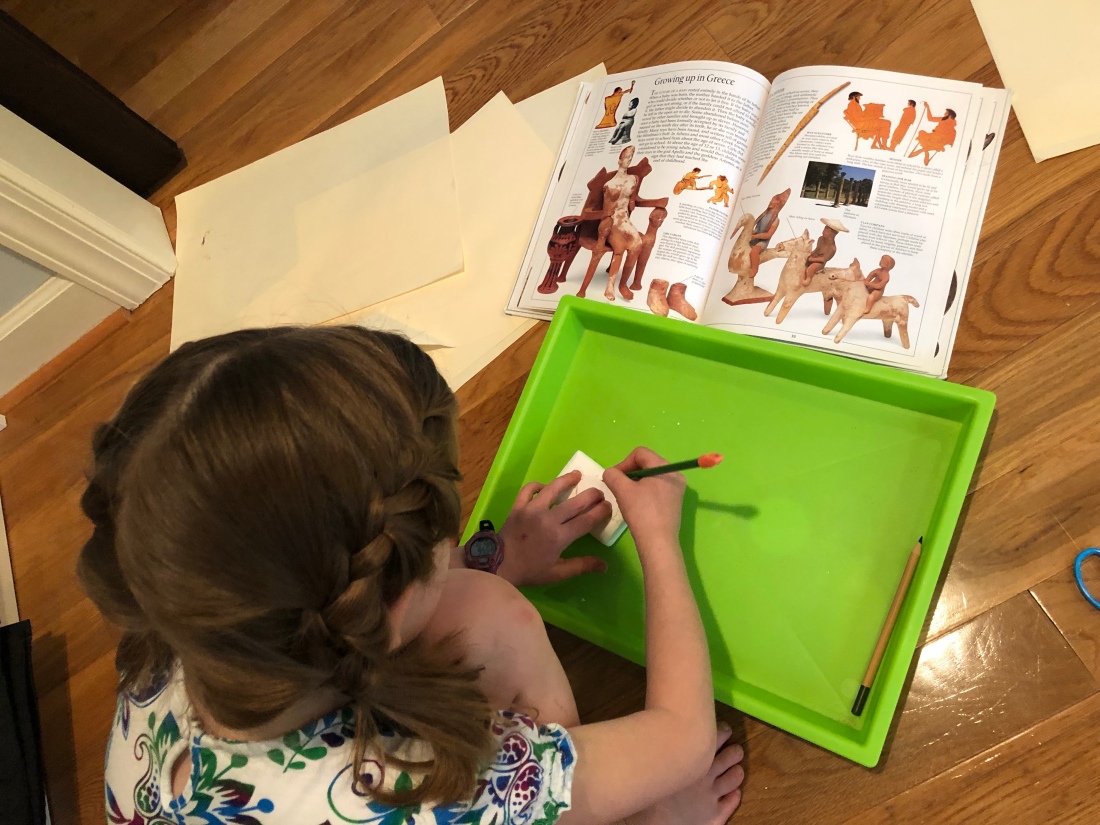
Next Year: My middle, D, will be joining us next year and she is all about the art and coming from a very art-centric preschool. So I know I need to up my game here. I’m considering maybe doing an easy off-the-shelf curriculum from Evan Moor about the elements of art or something. Either way, I think I need to make sure we have some art every week whether it’s aligned with history, science, or just pure art.
Geography
Plan: Use our PinItMaps to cover World Geography (continents, oceans, etc), Africa, and Europe in alignment with our History studies.
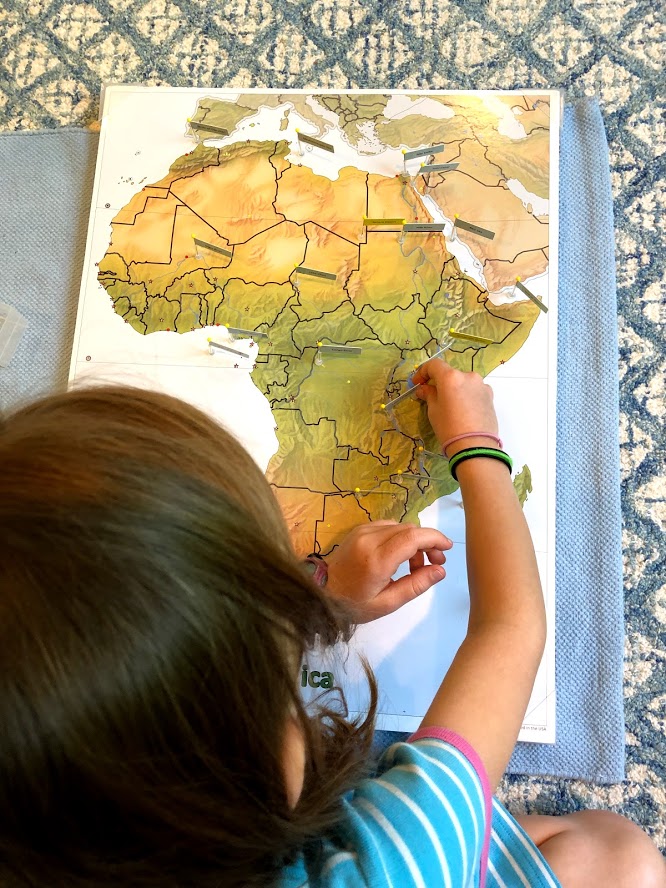
Actual: We only covered the World Map and Africa. We chose a very challenging continent (the most countries) and took our time going over all the countries, flags, and land/water forms. We finished in mid-May but mama just couldn’t muster the energy to start a whole new continent at that point. We really enjoyed pulling up amazing photos of all the various land/water forms we could find in Africa from the Namib Dessert to the Limpopo River.
Next Year: C has asked to start up again with Asia in the fall so we will continue there although I may see if she wouldn’t mind starting in Europe since she already has a head start there from some of our ancient history studies. D will likely follow along and I may have her start the Land and Water Forms set that provides such a nice intro into the maps (C knew all the possible land and water forms from last year and that made it easier to memorize them in Africa).
Science
Plan: To use ETC’s measurement task cards to study measurement for the first 10 weeks and then use the book Building Foundations of Scientific Understanding (BFSU) after that.
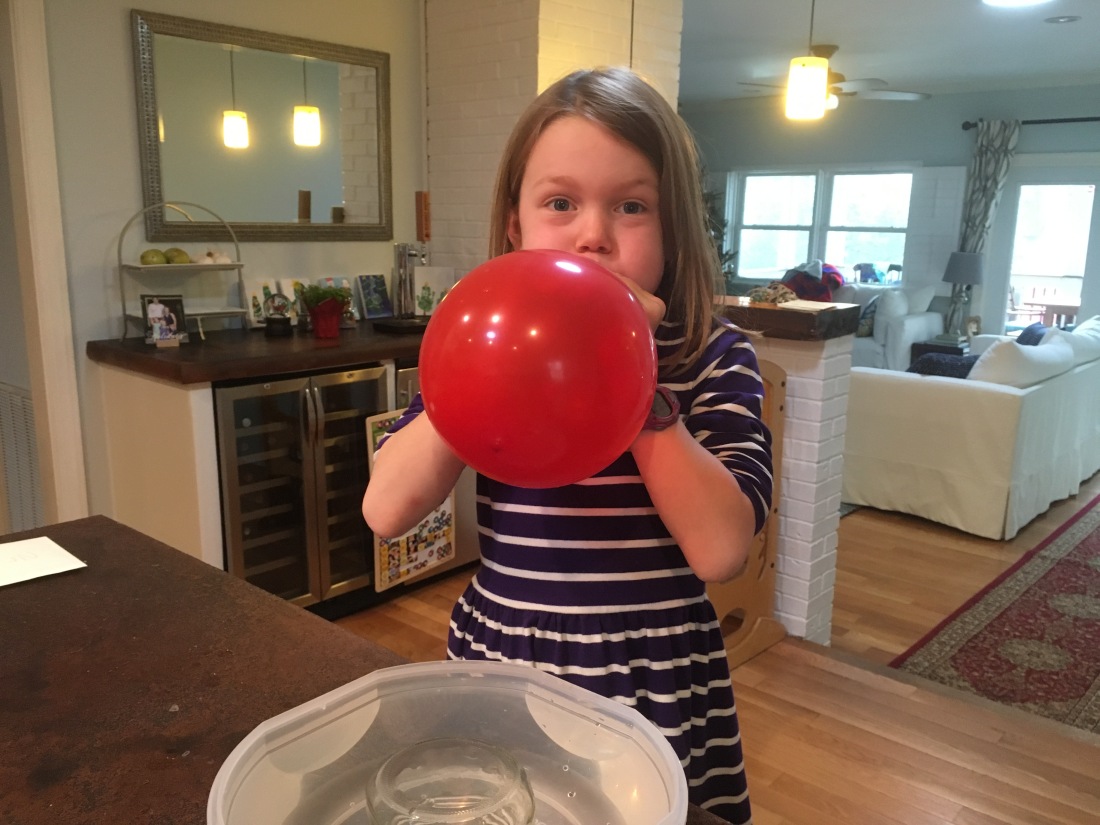
Actual: We matched the plan exactly. This was fairly easy because I counted the cards in advance and planned them for the measurement curriculum. In terms of BFSU, we went through it relatively casually but she definitely learned a lot. It’s a discussion based curriculum with a few experiments thrown in; I liked that we could spend more or less time on something as we were able. We definitely did not spend as long as some folks but it really worked for us. It helps that my background is in science and I find it very easy to distill these concepts into simple lessons and frameworks for her. We have one more biology lesson to complete this year and I’m sure I’ll fit that in during the next few weeks.
Next Year: We will likely do the same plan for C and start with measurement and then do BFSU; the way we do it, she should be finished with the book next year and ready to move on having covered all the introductory topics. C is also enrolled in a robotics/coding class in the fall so she will get some science that way. For D, we will likely do a light biome-focused science which is similar to what I did with her sister.
Math
Plan: As previously described, my basic plan was “try not to drown in math threads”. More specifically, my original curriculum plan had me covering these threads:
- Numeration: Finishing divisibility
- Fractions: Adding/subtracting with different denominators
- Operations: Multiplication – Flat bead frame, checkerboard
- Introduction to squares and cubes: Notation, passage from squares to cubes
- Operations: Long Division – Racks and Tubes
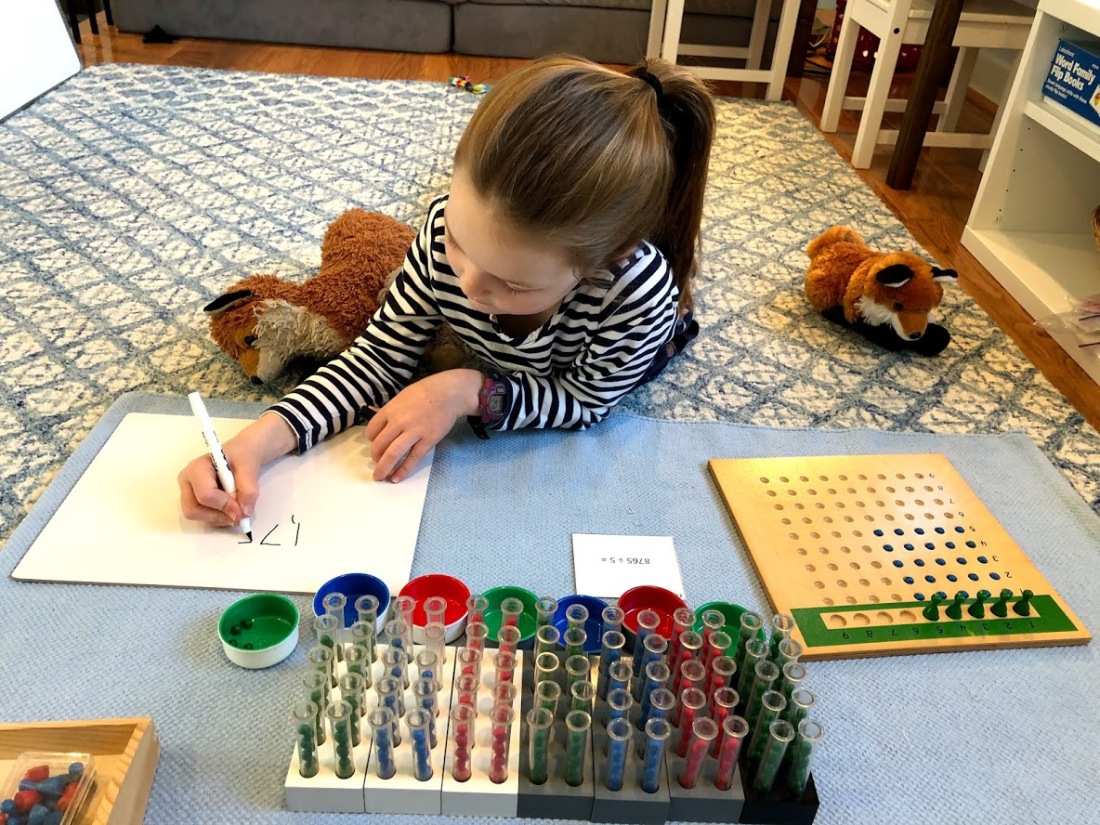
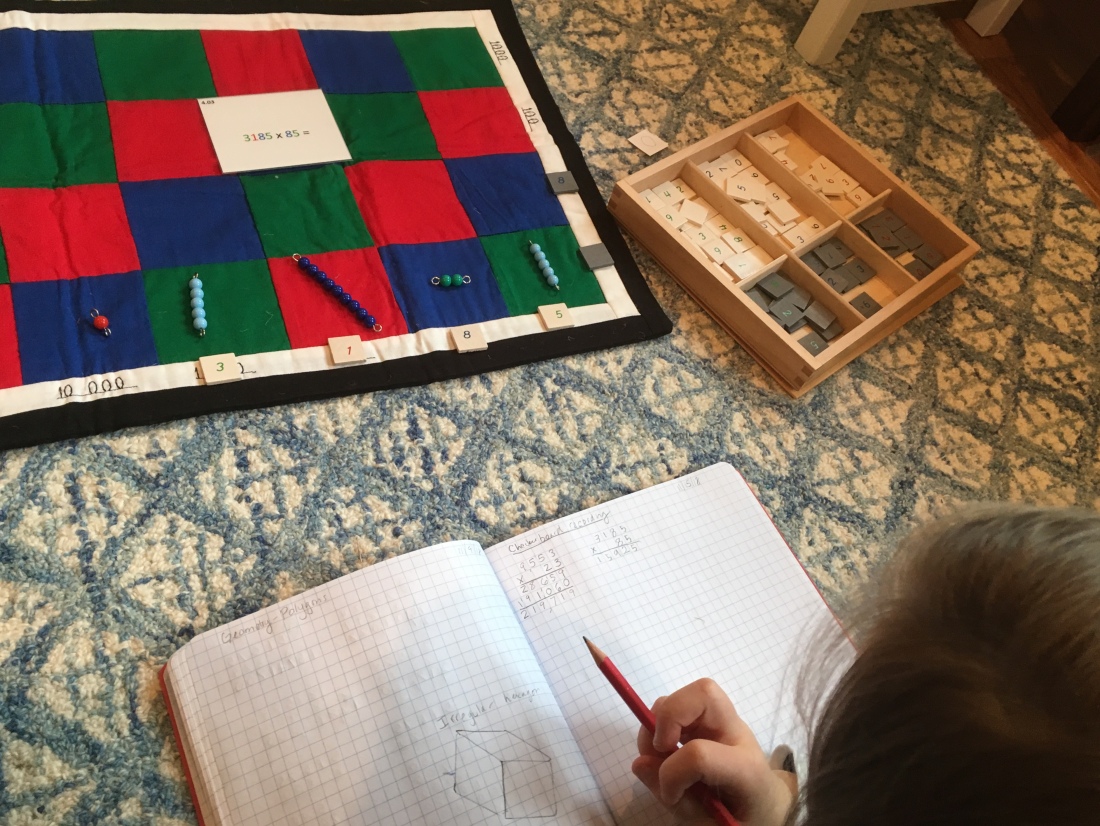
Actual: I realized mid-way through that my plan had assumed that each presentation in my album should be done in one week. This was a major error because there are some that take barely 5 minutes and cover the same topic so you can do 2-3 in a week (an example is that notation of squares and cubes is listed as separate lessons but can obviously be taught together); I don’t know why I assumed they were each a week, no one told me that. So anyway, we deviated from plan quite a bit and did a lot of additional math this year. Keep in mind that my daughter loves math, she chooses math first almost every day so we spend a lot of time on math.
So we actually covered:
- Numeration: Finishing divisibility
- Fractions: Adding/subtracting with different denominators (twice, once as a review)
- Operations: Multiplication – Flat bead frame, checkerboard, all the way to abstraction
- Introduction to squares/cubes: Notation, passage from squares to cubes, full decanomial square, paper decanomial
- Operations: Long Division – Racks and tubes, abstraction with the standard procedure
- Decimal Fractions: Operations with decimal fractions
In addition to these topics, we also covered (because I noticed the timing was good for these lessons or I realized she needed these skills):
- Advanced place value (place value riddles/detective work to practice critical thinking)
- Estimation
- Graphing
- Rounding
- Study of multi-digit multiplication strategies
And earlier in the year, we also started doing a lot of number sense work (I wrote about that at length here: Number sense & Montessori) including advanced number lines and “number talks” 2-3x per week. I still need to write a post on number talks in a homeschool but I have it saved on my Instagram videos which you can access here if you don’t have the Instagram app: McHomeschool Insta (it’s the video called “# talks”).
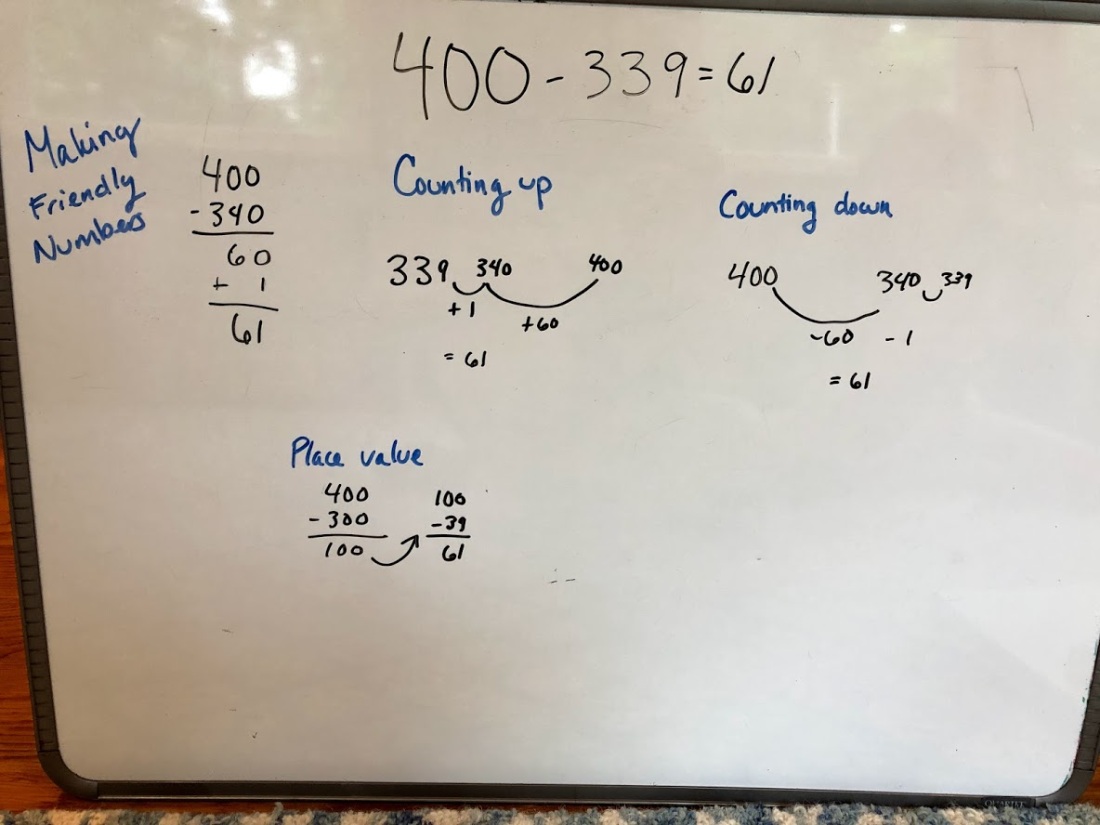
Math was a real highlight for us this year. I think this was because I felt so lost in the planning with so many threads and not sure the order in which to teach things. After having jumped in and tried things, I think I’ve realized that there’s probably no exact “right” way and that it’s easier to just start so you can adjust on the fly. I feel a lot more confident going into next year.
Next Year: We will definitely continue Number Talks/Number Sense work and will continue on with the Montessori progression where each girl is ready. Math is the area where we most purely stick with Montessori. Next year I’m pretty sure that our big topics with C will be completing the decimal fractions thread and diving into squaring and cubing. I’m also eyeing the Hands On Equations curriculum which covers concrete algebraic concepts for elementary schoolers but I’ll probably wait until at least mid-year on that. For D, we will be doing a lot of transitional math from primary to early elementary (think: golden bead operations).
Geometry
Plan: This was another area where I felt pretty lost in figuring out the order of the presentations. My plan was to cover the following:
- Polygons
- Angles
- Protractor use
- Lines
Actual: We were kind of all over the place with geometry. I had trouble figuring out a scope and sequence and honestly I think my ETC geometry task cards really added to the confusion because I wasn’t sure when to use each topic, etc. I actually like the content of the cards quite a bit and used them as follow-ups but I just haven’t quite figured out the order of geometry presentations very well yet, I need to work on that this summer.
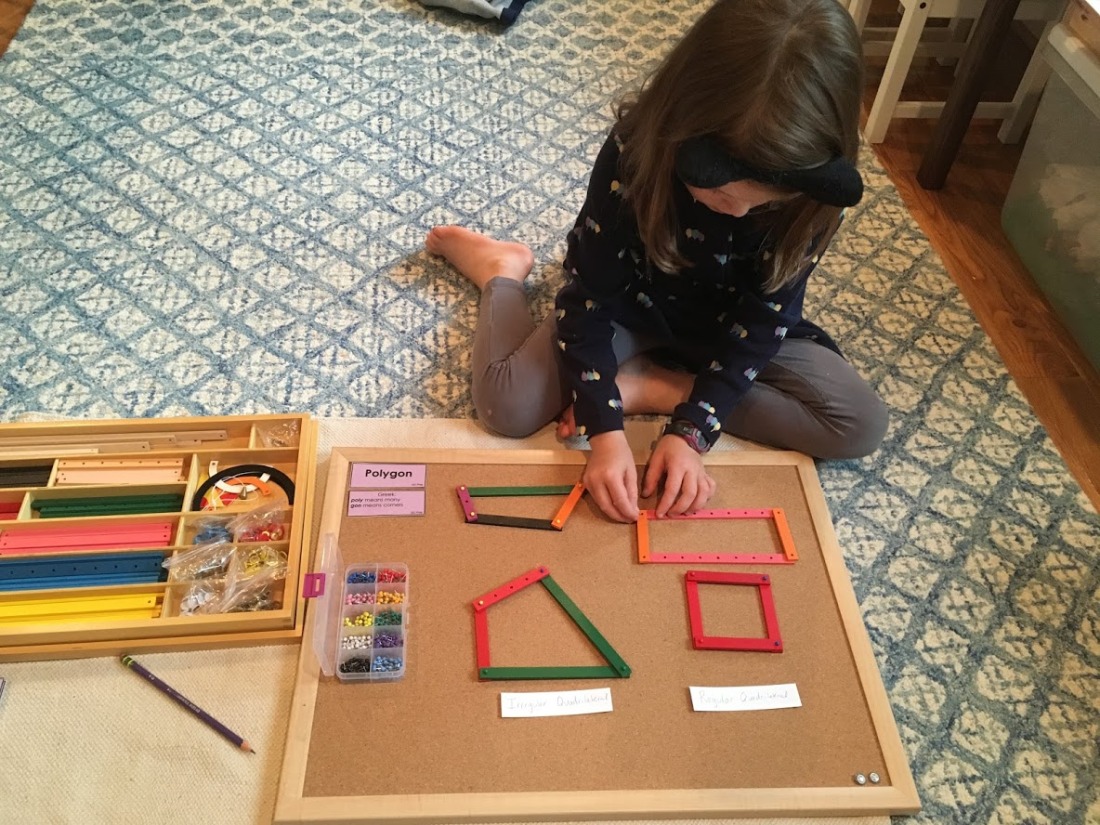
As best I recorded, we actually covered:
- Story of Geometry
- Polygons (names of, parts of, etymology of the names)
- Review of triangles
- Angles (parts of, addition/subtraction)
- Protractor use
- Lines (nomenclature, position of 1 and 2 lines)
- Circles (parts of, position relative to lines, position relative to two circles)
- Pythagorean theorem
- Quadrilaterals
None of these topics were in depth except probably angles/protractor use. I am treating the geometry curriculum as something we will spiral back through in coming years since I cannot imagine she will have retained all of this by next fall.
Next Year: We will continue…doing something. I really need to dig into the scope and sequence more and figure out a plan here. I just felt like I was ping ponging around all year and not necessarily giving her a great experience with any of the materials. This is on my list to figure out this summer.
Bible
Plan: Finish Mark, then find new plan
Actual: We finished up our line by line study of the book of Mark in January and we’ve moved on to a book called “Long Story Short”. It’s an (almost) chapter by chapter study of the Old Testament. It’s designed to take 3 years but I often put 2-3 lessons together so I can teach a whole Bible story (for example, the story of Abraham almost sacrificing Issac was broken into 3 but I combined them). I love that it comes with easy to understand questions and prayer recommendations based on the topic. It alternatives between the Old Testament, Psalms, and New Testament all to point to how the Old Testament portion actually points us to Jesus and/or the character of God. When we get to the end of a book or book section, we watch the video from The Bible Project on that biblical book.
Next Year: We will continue with “Long Story Short” and the Bible Project Videos for sure. Although I admit that the book “Leading Little Ones to God” has me intrigued. *sigh* Constant FOMO from the homeschooling mom…
Language
Plan: To address the following four threads:
- Grammar: Continue with adverb, preposition, and pronoun
- Word study: Compound words, prefixes, suffixes
- Spelling: Words Their Way word sorts
- Writing: Complete Writing with Ease (Level 1) book
Actual: Oh my. Remember above when we spent so much time on math, well language is probably what suffered the most. We just weren’t that into it. Here’s what we actually accomplished:
- Grammar: Adverb, preposition, and pronoun
- Word study: compound words, suffixes
- Introductory sentence analysis
- Spelling: Only made it through about 10 WTW sorts all year
- Writing: This is a 36 week program if done 4 days/week (about 15 minutes per day)…we are currently on week 18. We did do it every week, just not every day. To be clear, I really like it, we just weren’t consistent enough with it.
That may look like a long list of things we actually accomplished but believe me, it was really a bare minimum. Where we would spend hours on math practice problems and follow-ups, we would often do the most basic possible version of word study or spelling quickly and just move on. And she did almost no writing this year except for the occasional single sentence to accompany a history drawing.

Next year: Clearly I need a more intensive plan for C to do more writing. My issue is that a lot of the programs are comprehensive language arts plans (writing, spelling, grammar, AND writing) and I really only need writing. The issue that I’m grappling with, of course, is time! If she wants to do this much math, we simply won’t have time for hours of writing. I was looking at a curriculum the other day (a writer’s workshop style) that suggested working towards 45-60 minutes of writing a day which actually blew my mind. I’ve got a few things I’m looking into and I’ll report back.
Also, I’d really like to do some basic literary analysis (setting, characters, plot) and I’m currently looking into some of the unit packs from Blackbird & Company. I love that they take excellent picture-style books and use them to teach literary analysis. I’m excited to do some unit studies that both girls can participate in.
Weekly Schedule
Plan:
- Sunday – weekly meeting (20-30 minutes of discussing the upcoming week)
- Monday – CC coop day, geography
- Since geography is mostly independent, she can work on that while I’m working on Monday afternoon
- Tuesday — Great Lessons/History, Geometry, and Language (Spelling/Writing)
- The Great Lessons will take the most time and I’m not planning any geometry for the first 10 weeks to allow immersion in the Great Lessons. Once we’re doing regular history, we’ll be incorporating geometry
- Wednesday — Math, Language (Word Study/Grammar)
- Thurs – Science
- Friday – Flex day including Art if we haven’t already completed. Follow-ups and additional exploration
Actual: Oh wasn’t I so cute with my weekly schedule? I have no idea what I was thinking. I don’t think we ever followed anything close to this. She choose work and we did it, the end. I actually do think next year I might schedule some presentations because we will have some joint ones (history, literature units, maybe science) but this whole daily schedule thing just didn’t work for us last year. It felt unnecessarily rigid especially for one child.
Final Thoughts
We had a great year! I’m really happy with my first attempt at curriculum planning and will definitely look to do something similar for next year especially so I can do things like properly time the literature units/history.
I would love to hear from you about what did/didn’t work for your family this year! Please feel free to comment or message me (Instagram is best for private messages).
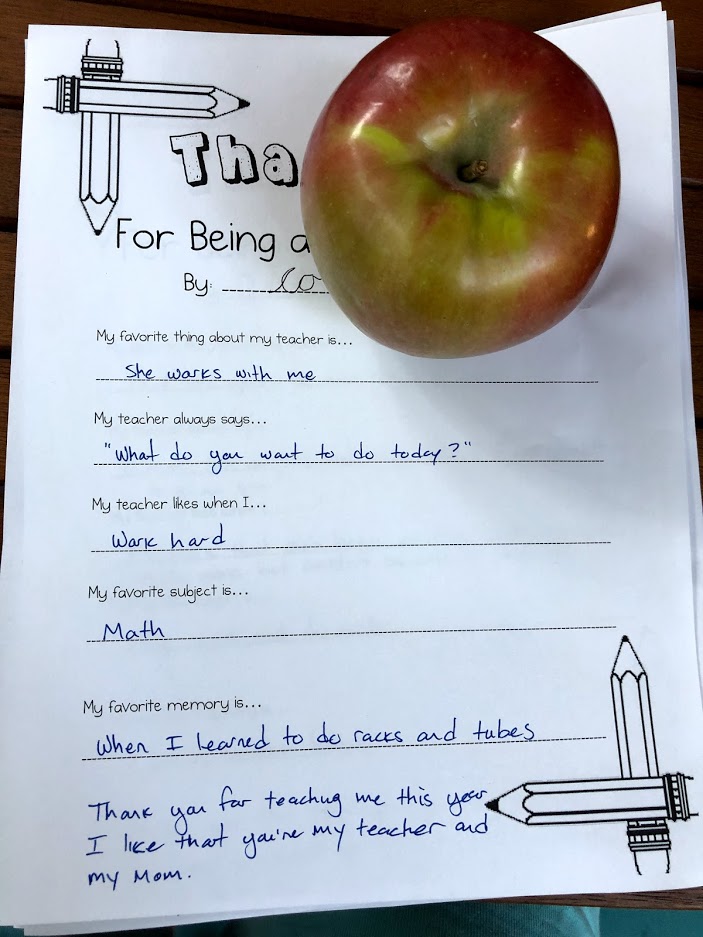
Awww.. That note is so sweet. You are rocking it with homeschooling! We’re a few years away from the elementary level, but I’ve been following for a while, trying to get as much information as I could before we get there. Thank you for being an inspiration.
LikeLike
Thank you for the sweet comment! Appreciate the encouragement. There aren’t that many elementary school homeschoolers using Montessori so I’m really happy to hear that the blog is helpful to you. Best wishes for a wonderful summer!
LikeLike
This is helpful for me too! Oh man. We’re starting a first grader this year after homeschooling kindergarten Montessori style, and a year two Montessori primary-grader(??). BUT Lots of blogs out there focus on purely Montessori for elementary – and I was very overwhelmed about work involved (also expecting #3 in early September- of course…) and wasn’t sure if it all really had to be full blown all Montessori or not and pretty sure it didn’t, but finding no examples…
So I decided to lean into a hybrid on my own and keep the math & some language, find other resources and extend as needed – and WHOA I found your blog and I am so encouraged that someone else did what I am planning, and hasn’t completely burned out and seems successful so far! Hooray excel spreadsheet planning!
We’re science and math people too – and Bible – and even more encouraging that we’re thinking along the same lines.
Thanks for writing friend, keep up the good research and encouragement!
LikeLike
Thanks for the encouragement Lauren! I often assume that no one is reading the blog but I want to put it out there in case it helps someone so I loved receiving your comment!
Wishing you a wonderful school year and a sweet welcome to your new babe.
LikeLike